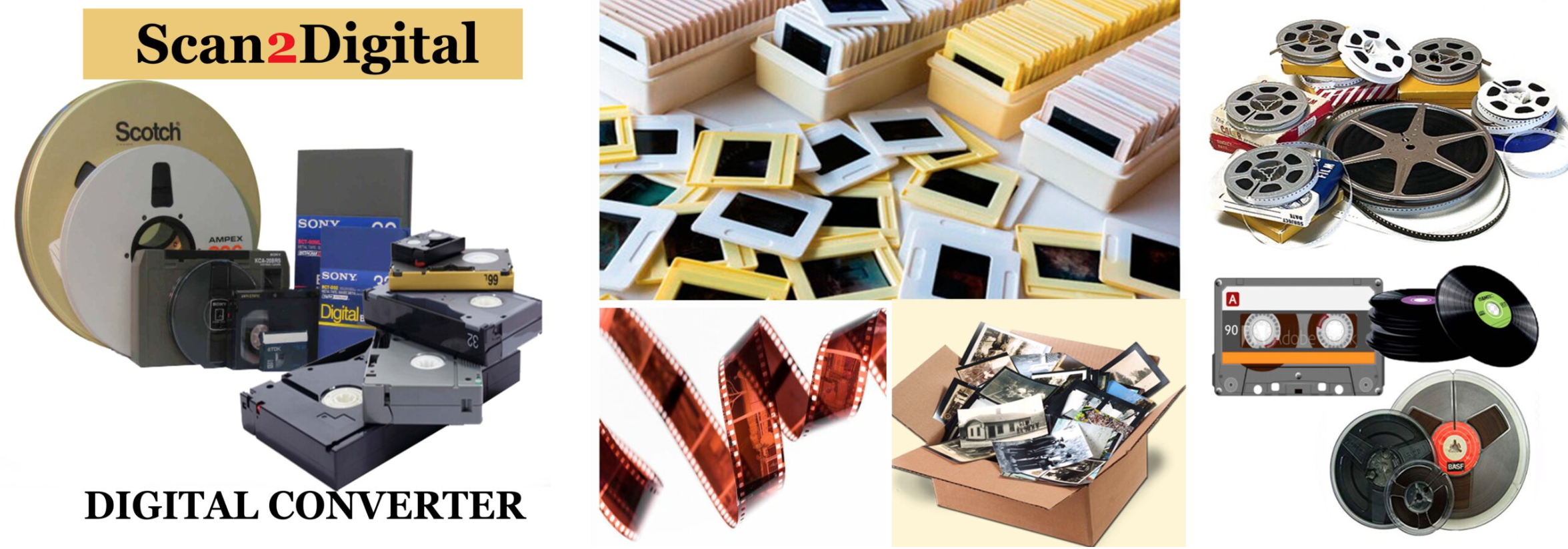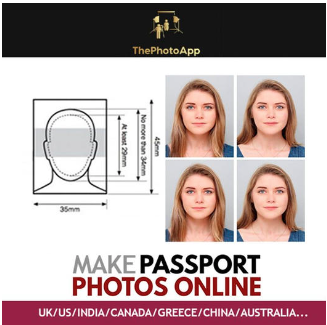Your Guide to Scanning Slides, Negatives, and Loose Photos
Free your concealed recollections from their dull and rotting enclose your wardrobe by switching your negatives and slides over completely to digital documents.
Scanning Slides and Negatives from occasions, family photographs and getaways, your cherished recollections stay stowed away, put away as slides or negatives. With PCs, online entertainment (#ThrowbackThursday or #TBT), and cell phones, recollections are presently effectively open and sharable. We share four distinct approaches to digitising changing over, the two slides and negatives to digital pictures, delivering those “simple” recollections for people in the future.
Ship off to a Professional.
ScantoDigital provides excellent 35mm slide scanning service, 8mm film scanning, photo album scanning, VHS & Camcorder tapes to Digital DVD/USb, Audio Reel , Vinyl Records and Cassette to CD/MP3 file.
Slides and Negatives.
For as low as 35p each, our photograph lab can expertly change your slides over completely to digital pictures and scan your film negatives, transfer them for web download and send you a CD or thumb drive with your scanned pictures. Here are some basic central issues to consider:
Cost – For about 35p scan, you can choose the pictures you need or simply send pictures in mass. Assuming you have time, you can think about scanning them yourself.
Quality – Our slide-scanning administrations can convey extremely top-notch scans of your slides that will look great in any event, when imprinted in enormous organisations. For old slides or negatives, The slide scan innovation decreases dust spots. A 35mm Kodachrome slide, on the off chance that taken in the centre and not harmed, ought to furnish roughly a 20-megapixel picture with a higher goal scan.
Purchase a Slide scanner
While the quality is by and large better with expert scanning help and the undertaking of scanning your own slides and negatives can be drawn-out and tedious, there is a sure fulfilment and adaptability of doing it without anyone else’s help… giving you the opportunity. Likewise, as a component of the scanning system, you can screen your choices by discarding coincidental photograph fizzles, excess or unfortunate topic pictures.
With a speedy Google search, there is a huge number with great many qualities, highlights, and costs. A few highlights to consider while purchasing a slide scanner.
Quality – Because you’re getting some margin to scan the slides and negatives, the goal is significant. Look at the megapixel number of the scanner you’re keen on. They can go from 5 to 9 megapixels.
Speed – Inexpensive slide scanners expect you to scan to your PC, each in turn. Think about this if you would rather not allow up an end of the week. On the off chance that it requires 30-60 seconds to scan per slide, naming and recording time, it can require a lot of investment to handle a crate of slides. Top-quality 35mm slide and negative scanners have fast mode scanning even at the most noteworthy goal around 7200 dpi. The high-goal scans produce bigger documents thus you want a quick exchange rate to the scanner’s inner memory or SD/SDHC Card.
Similarity –
Most scanners will work with new PCs, whether Mac or PC, and some scanners don’t need a PC. In the event that you have a more established PC, check the particulars and similarities while considering a scanner.
Correlation Shopping –
With the web presence, it’s essentially necessary to do a little research preceding purchasing on the web. We might want to do an examination, however, a connection or a correlation of scanners will turn out to be rapidly old in this gathering.
TIP: Check for photography rental organisations in your space. Frequently they have proficient grade scanners accessible for lease and may significantly offer “free ends of the week” in the event that you lease on Friday and return “after 24 hours” on Monday.
Utilize a Flatbed scanner
A less expensive option is utilising a flatbed scanner for a fair (not extraordinary) way to digitise your slides or negatives. Since slides ought to be enlightened from behind, flatbed scanners catch mirrored light from a report, so there will be innate restrictions in quality, lighting and goal, reasonable requiring Photoshop or photograph programming to change editing, splendor, and differentiation. To work on scan quality, you can make a Cardboard connector to mirror light from the scanner and back through the slide or negative (see beneath).
Make has directions on making a basic Cardboard connector to catch the light from the scanner and reflect it behind the slide. The most effective method to: Make a Cardboard connector for scanning slides
For negatives, most picture-handling projects will have an ‘upset’ capability that will turn around it from negative to positive.
Projecting Your Images
As of now, we’ve gone from best, better, great, and presently we are at the “will work” or “simply OK” technique. This procedure is just for slides and is projecting your picture and shooting it with your digital camera/cell phone. Set up your projector, screen, and mount and physically centre your digital camera to photos of the picture as shown on the screen.
Use your cell phone. Use a photograph-altering system to change your picture. While there are numerous accessible applications, Google’s SnapSeed application for iPhone works really hard.
Different Options
35mm Slide Converter for Cellphone
Have a direction on utilising a cell phone to change over 35mm slides into digital pictures utilising a PVC line and a few devices. While we haven’t tried it, seems as though it ought to work and catch nice pictures.
Dave Dyer made a post on contrasting the various strategies for scanning slides. The article is old, yet we feel the outcomes are as yet legitimate and show the distinctions in quality.
What is Slide Film?
Recall skimming National Geographic while holding up at the dental specialist as a youngster? The majority of those (presently presumably awful) pictures were shot with slide film. Ektachrome, a slide film from Kodak, turned out to be particularly well known with National Geographic expert picture takers, by virtue of the rich tones and extraordinary grain. The appeal of Ektachrome propelled pictures in magazines, for example, that frequently roused numerous into photography.
A standard variety film, or print film, delivers a variety of ominous films that when shown through an enlarger empowers you to print a positive variety picture, However, when prints or scans are finished from the horror film, there is a huge fluctuation in how the last pictures end up. Each printing shop offers a somewhat different result in view of the synthetic substances they use to change over the negatives into a positive picture.
Slide movie, or variety inversion movie, produces great varieties on slides so they can be stuffed straightforwardly into a projector and shown with no guarantees. What you find in the film is what you get. It’s an expert-grade film with enthusiastic varieties, differences, sharpness, and truly fine grain.
High contrast film has 5 stops of dynamic reach (scope). This recommends you can neglect to set direct openness yet end up with a picture. The variety of troublesome films has a 3 stop assortment. Anyway, slide film simply has 1.5 stops of lively assortment, so you expect to settle on cognisant decisions about what to meter for in the picture.
Advantages of slide film
The variety and differentiation that starts from slide film are second to none. Indeed, even advanced digital cams, to be specific Fuji electronic cameras, comprise underlying film recreations to copy the appearance delivered by these movies. Incredible shot, but literally nothing is superior to the real thing.
Being able to see the results is a major advantage. You can get the film and see precisely the way that the pictures wound up. You can then scan them straight, take pictures of them or use them on a projector.
Slide film endures until the end of time. It’s the ’80s Toyota Land Cruiser of the film We have all found boxes of pictures in your home that are blurred, wrinkled, and loaded up with secret stains. All things considered, slide film will sit rather happily in a container for quite a long time with next to no deficiency of variety, differentiation, or quality.
You can cross strategy, which recommends fostering the slide film using the C-41 methodology. This can deliver a few out-of-control tones. Anyone who’s spent at least 5 minutes on Instagram will figure out everything about channels. Indeed, those blurred, blue-conditioned.
Impediments of shooting slide film.
Slide film simply has around 1.5 stops of scope. This implies that a little finished (or under) openness could cause you to lose each of the subtleties in the features (or shadows).
It is expensive! These days it is getting more diligently and more hard to get your hands on slide film, and when you do, you might expect to plunge into your children’s school store.
At the point when you have it, you expect to find someone that can foster it. You want to look for a lab that can do E-6 progression. Try not to worry. There are likewise a lot of remote administrations that are accessible, essentially looking on the web.
Film
It’s not your everyday film as now and again the immersed colours are simply excessively wild. For instance, Fuji Velvia is perfect for landscape shooting, however on the off chance that pre-owned inside for pictures, you’ll wind up with some uncommon variety of projects. Grandma’s 60th birthday celebration pictures might make them seem to be Snooki from Jersey Shore.
Can we just look at things objectively, shooting a film isn’t ideal for everybody and slide film is somewhat of an odd one out? Anyway on the off chance that you, similar to me, such as finding everything photography, shooting slide film is an unquestionable necessity.



